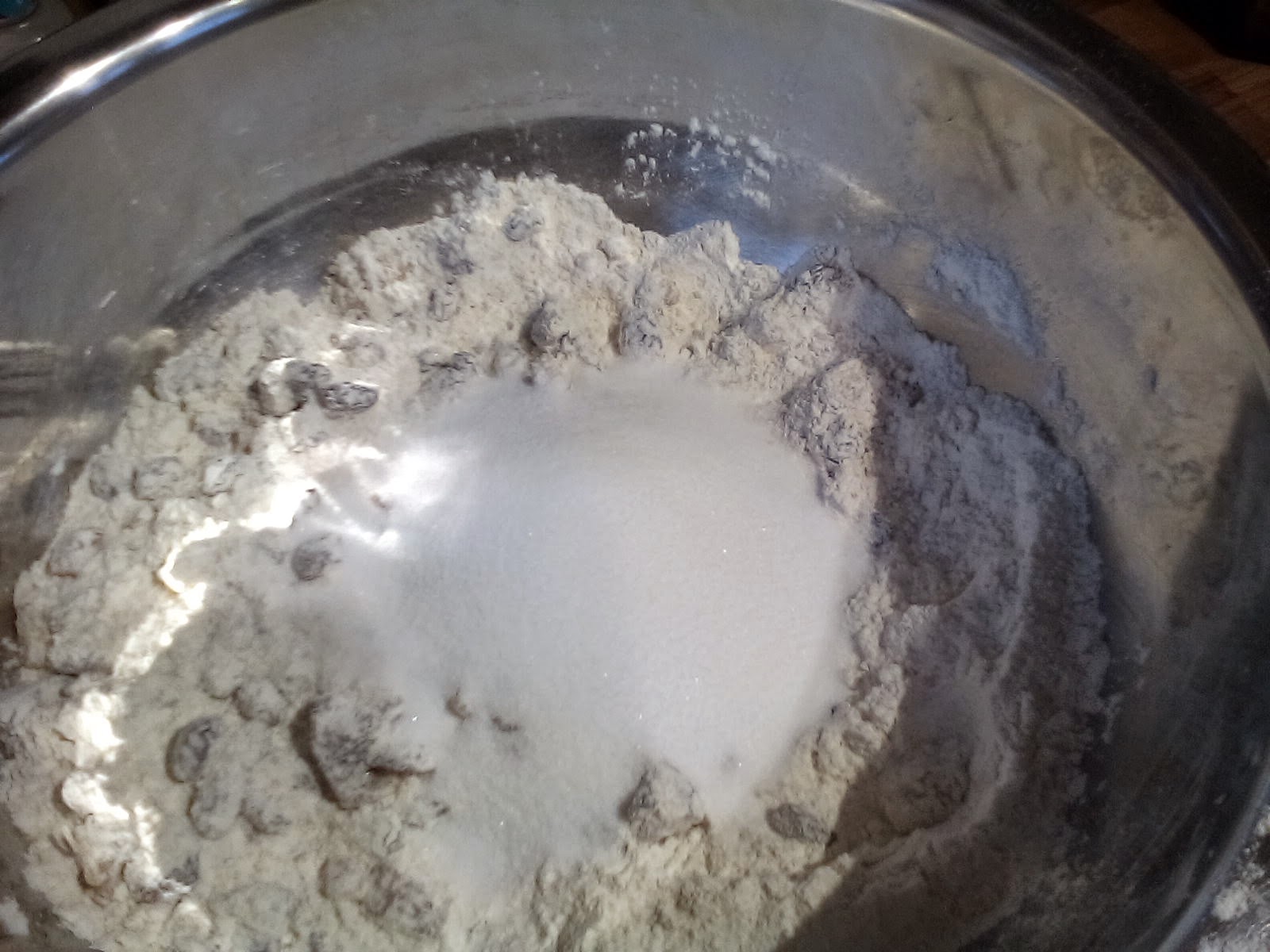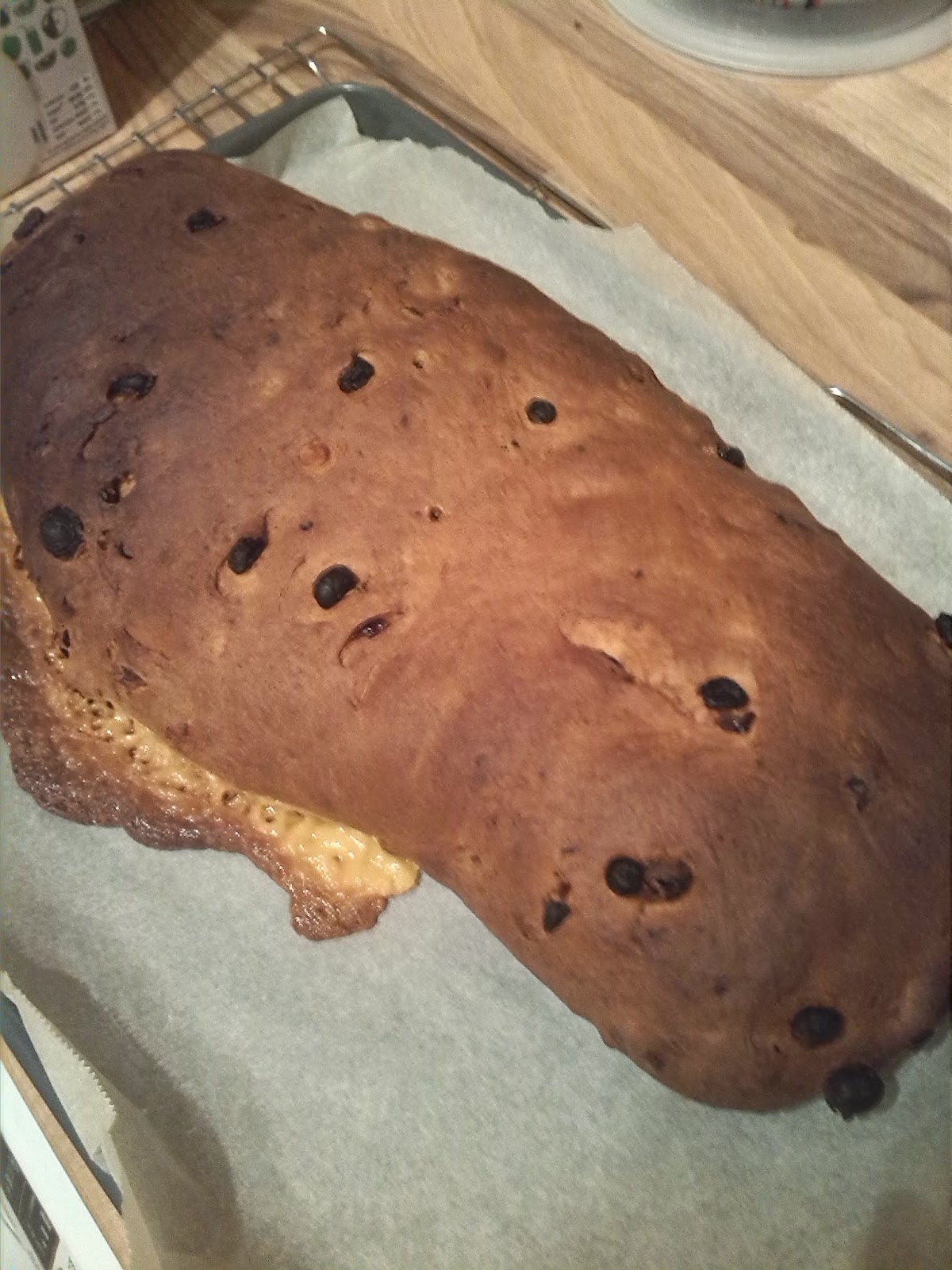Recently, a very secretive fellow-blogger, the Fry-up Inspector, was drooling over a picture of a full English breakfast in a pie. As he lives close to me I offered to make him one to try, thinking that Hot water crust pastry is just the sort of skill that you all might like to see a 'How-to' on. So, here's how to make a traditional raised pie, and if you want to find out how the one in the picture tasted, you have to check the Fry-up Inspector's blog: fryupsgoodornot.blogspot.co.uk/
When you get the hang of it, hot water crust pastry is, I think, one of the easiest pastries to work with. It's very forgiving, you can roll it, mould it, patch it, and even play with it, because it's feels like warm playdough.
To make any raised pie, you must first prepare your filling. A traditional raised pork pie will require some diced pork from your butcher, mixed with some cooked bacon cut into small pieces, or lardons, and include a couple of slices of bread soaked in milk. This should be seasoned with a little salt, plenty of pepper, and some mixed spice and nutmeg. Quantities will depend on the size of pie tin or mould you are going to use. That's why going to a butcher is a good thing, you can even take your tin with you to make sure you have enough to fill it 3/4 full.
Of course, raised pies also include game pies, you can make veggie versions with Quorn etc., and various layered pies including gala pies (with the egg in the middle), or in this case, a full English breakfast in a pie!
Mine included Cumberland sausages, a spinach 'Bubble and Squeak,' smoked bacon lardons, and Scottish black pudding. This was going to be layered around a soft boiled egg or two (boil until just firm enough to shell, because it will be cooked again in the pie. Use a teaspoon to slide under the shell and peel it off,) all of this topped with a couple of layers of semi-roasted and seasoned flat mushrooms and vine tomatoes.
The proportion of fat-to-flour in a hot water pastry is the same as a regular short-crust, ie, half the weight of the flour in fat. So if you use 500g of flour you will also need 250g of fat. The flour must be strong white, as you would use for bread. Traditionally you use lard in hot water crust, but you can use hard (baking) margarine, or 80% margarine and 20% butter. Put the fat in a pan with an equal weight of water (1ml of water weighs 1g, so for 250g of fat, add 250ml of water.)
Bring the water to a rolling boil, and leave it boiling until all the fat has melted. If you are cooking lard it really smells your kitchen out! On this occasion I was also making a veggie pie, so I used marge and butter. Put the flour in a large bowl and make a well in the centre. As soon as the fat is melted pour the liquid into the flour and beat it hard with a wooden spoon or strong spatula until it is all combined and mixed to a smooth dough. Set it aside for a few minutes while you prepare your tin, until it is cool enough to handle, but still warm and malleable.
You will need a deep pie or cake tin, or if possible a loose ring on a flat oven tray. Again, traditionally, raised pies are 'raised' around the outside of a mould, that is then removed and the filling added. However, it is easier to mould inside a tin for beginners. If you are using a loose ring, oil the ring and set it on a piece of baking paper on a tray. You can use a loose bottomed cake or pie tin, or if you are using a solid tin, you will need to line it with baking paper to make removing the pie possible! Reserve 1/3rd of the dough for the lid. You can roll out hot water crust, but I prefer to mould the dough in the tin, like a potter making a vase(...ish), put the dough in the bottom of the tin, then push it out from the middle and up the sides, turning the tin as you go, until it is a fairly even thickness and just goes over the top. Don't worry about smoothness here, this bit's on the inside! You can use a bit of the reserved dough to patch any holes or thin bits at this stage.
I filled mine in layers, starting with the bubble and squeak mixture, finishing with the mushrooms.
Roll the reserved pastry to cover the top, place it over and tuck it in the edges. Trim the surplus and pinch the top and sides together.
Cut a hole in the middle to let the steam out and brush the top with beaten egg. You can make decorations with any left over pastry, but save a little back wrapped in baking paper, it's always worth doing this with any pastry, in case you have to patch any shrinks, cracks or holes later.
Bake in a hot oven (210-230 degC) for 25 minutes, then reduce the heat to medium (170-200 degC) and bake for another 30 minutes for a small (individual) pie, 1- 1 1/4 hours for a medium 1 1/2 - 2 hours for a large pie. If you have a probe or meat thermometer, cook it until it reaches 75 degC in the centre to guarantee it's thoroughly cooked.
In the meantime, why not make a nice mushroom ketchup to go with the pie? Sweat a chopped red onion in a pan with a little oil, then add 250g of roughly chopped mushrooms, cook for a little longer then add 150ml of cider vinegar and 50g of demerara sugar, salt and pepper.
Simmer until the vinegar has reduced until thick and syrupy, then add 300ml of double cream and heat through until the cream simmers, taste and adjust the seasoning, sugar and vinegar to taste. Take it off the heat and leave to cool before blending with a stick blender or liquidiser.
When the pie is cooked through, if it's in a loose ring, springform, or easy to remove from the tin, then take it out carefully, patch any cracks, glaze the sides and top with more egg, and return to the oven on high for another 10 to 15 minutes.
Leave the pie to cool before cutting or placing in a fridge, then serve with the mushroom ketchup... and a nice salad?

























































